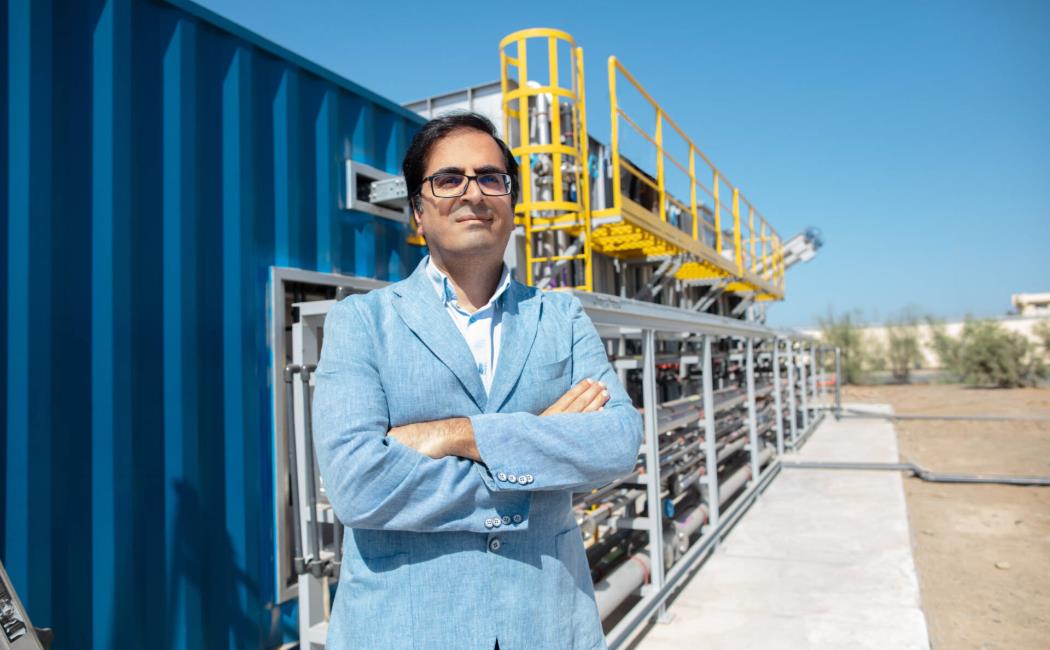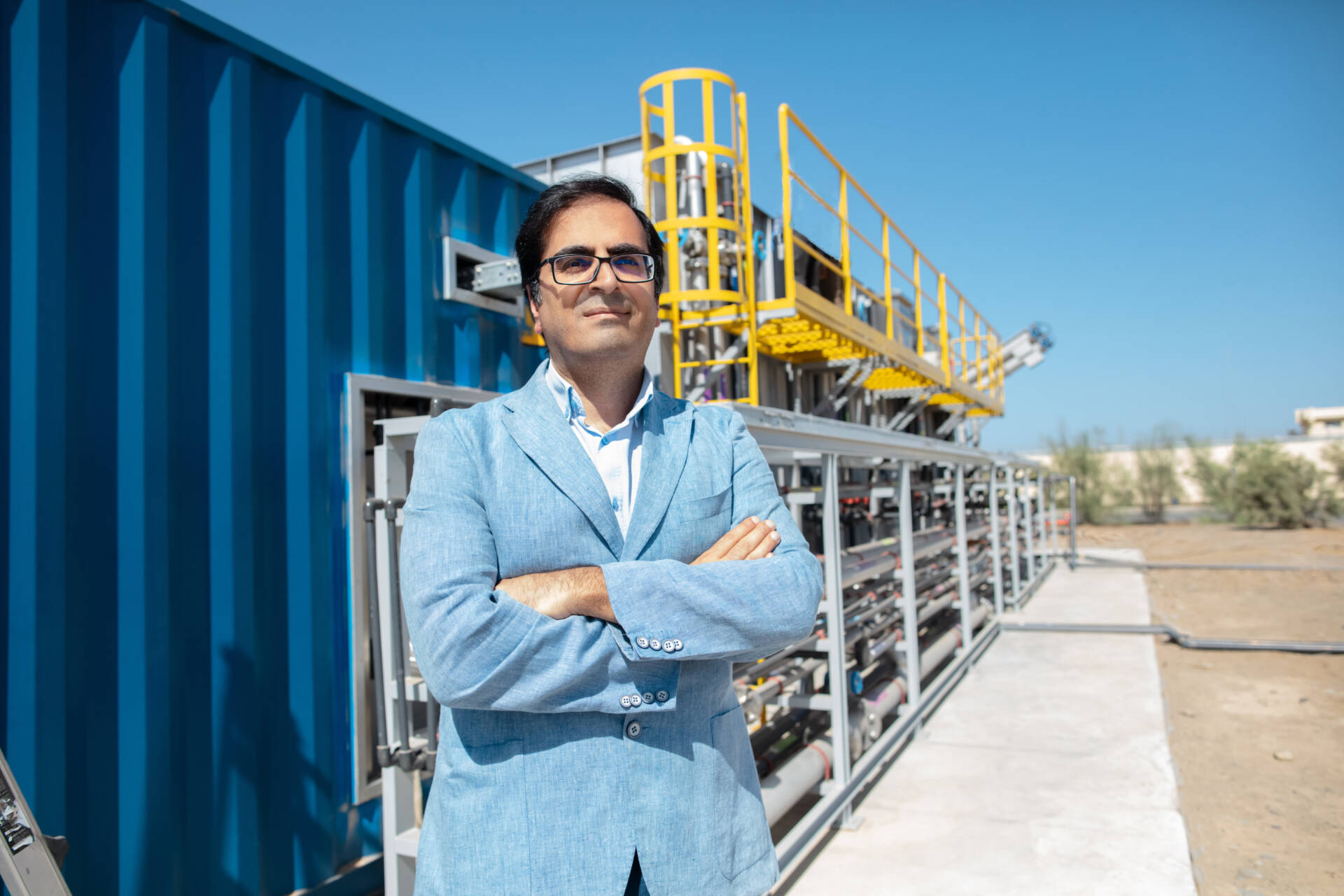


24 August, 2023

A novel wastewater treatment technology has been developed to serve the around 40 percent of households that are currently in unsewered areas of Saudi Arabia.
Working with KAUST Innovation and the National Water Company, researchers Pascal Saikaly from KAUST and Muhammad Ali, KAUST alumni now at Trinity College Dublin, have deployed the first full-scale demonstration of the technology at National Water Company’s wastewater treatment site in Rabigh.
This project is one of several initiatives within the national transformation program of Saudi Arabia’s Vision 2030. These initiatives aim to upgrade water and wastewater services to boost water resources, through strengthening distribution and treatment infrastructure, and establish electronic operation and management.
Households not connected to the centralized wastewater network generate wastewater that must be collected and transported to centralized treatment plants by truck, which is costly and results in traffic congestion, air pollution and emission of greenhouse gas.
“Our wastewater technology is an innovative and efficient approach that offers several unique features compared with conventional wastewater treatment methods,” says Ali.
The decentralized unit can treat 150 cubic meters of wastewater, serving about 1000–1500 people. The system has a significantly smaller footprint and lower operational cost than conventional wastewater treatment processes. Plus, it can produce water of reliable quality for applications such as irrigation, horticulture and industry.
“The system has a significantly smaller footprint and lower operational cost than conventional wastewater treatment processes.”
“The system is producing high-quality treated effluent that meets the regulatory standards for discharge into waters or reuse for certain nonpotable applications,” reports Ali. “We will monitor the treated effluent quality at Rabigh for the next three months before starting any reuse application.”
The innovative technology combines biological treatment with a gravity-driven membrane filtration process.
“By integrating these processes, the system can achieve a high level of treatment efficiency while minimizing the use of energy and chemicals,” says Ali. It also produces 50 percent less excess sludge than a conventional treatment process.
The researchers say the technology is highly efficient in removing pollutants from wastewater, including nutrients such as nitrogen and phosphorus.
As part of Vision 2030, Saudi Arabia has a target to increase the reuse of treated sewage effluent from the current 25 percent to 70 percent.
“The Ministry of Environment, Water and Agriculture (MEWA) is happy to support local innovation that will bring benefit to the Kingdom and beyond,” says Deputy Minister for Water at MEWA, Abdul Aziz bin Muhareb Al-Shaibani.
“As part of Saudi Vision 2030, it is important that every household should have access to sanitation and this technology will hopefully play an important role in achieving that vision.”

From left: Director General of Water Planning at MEWA, Saud Mohammed Bin Marshad, KAUST environmental scientist Pascal Saikaly and CEO at the National Water Company, Nemer Al-Shebel, at the opening of the demonstration of the wastewater treatment plant in Rabigh. ©KAUST 2023; Anastasia Serin
The new technology is suitable for small (1,000 people) to medium-size (10,000 people) communities. It can be installed in areas where space is limited and its modular nature allows for easy expansion as a community grows or as treatment needs change.